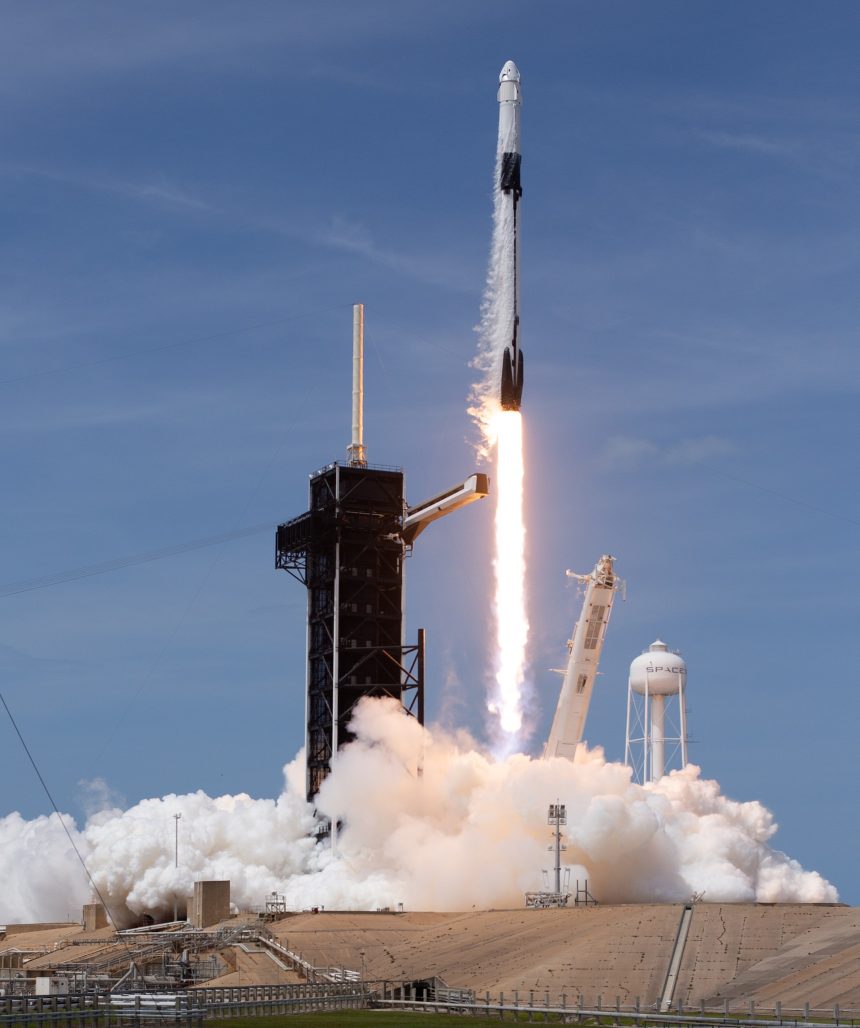Within the celestial theater of aerospace marvels, the Falcon 9 rocket by SpaceX emerges not merely as an artifact of human ingenuity but as a harbinger of a new dawn in cosmic voyages. Forged in the crucible of Elon Musk’s visionary zeal, this towering beacon of technology has irrevocably altered the paradigms of space travel, rendering it more attainable and eco-conscious. Its array of distinctive features and monumental achievements has not only propelled the frontiers of extraterrestrial exploration but has also kindled the collective imagination and curiosity of both the populace and the scientific fraternity.
The Reusability Revolution
Among the tapestry of innovations that the Falcon 9 unfurls, its reusability stands as a cornerstone, challenging the erstwhile dogma of expendable spacecraft. The conventional narrative of rockets, destined for a solitary journey, consigned to the abyss of the oceans or the incinerator of the atmosphere post-mission, rendered space endeavors an exorbitant and unsustainable odyssey. In stark contrast, Falcon 9 ushers in the renaissance of reusability, with its first stage performing a balletic descent back to terra firma, alighting with grace on either maritime drone platforms or terrestrial pads. This paradigm shift heralds a seismic reduction in space access costs, democratizing the celestial realm for an array of payloads and missions.
The Art of Precision Landing
The spectacle of Falcon 9’s first stage, descending from the heavens to a pinpoint landing, transcends mere technological prowess; it is a symphony of precision engineering. Employing an ensemble of grid fins, cold gas thrusters, and a decelerating engine burn, this leviathan of space pirouettes back from the brink of the void to its earthly cradle. This feat once consigned to the realm of fantastical fiction, now stands as a testament to human endeavor and innovation.
Payload Prowess and Orbital Versatility
Engineered with a blueprint for versatility, the Falcon 9 is adept at ferrying a diverse cadre of payloads across a spectrum of orbits. Its dual-stage architecture, honed for utmost reliability and safety, cradles crewed vessels, satellites, and freight to the International Space Station (ISS) and beyond, embodying a Swiss army knife in the arsenal of space missions, from commercial satellite deployment to the loftier aspirations of scientific inquiry and manned ventures.
Stewardship of the Blue Planet
In its quest among the stars, the Falcon 9 remains tethered to its terrestrial roots with considerations for Earth’s environmental sanctity. Propelled by Merlin engines that burn a concoction of rocket-grade kerosene and liquid oxygen, it eschews the more deleterious propellants, while its hallmark reusability mitigates the proliferation of orbital debris and the voracious consumption of raw materials.
The Commercial Spaceflight Renaissance
The Falcon 9’s odyssey has ignited the engines of the nascent commercial spaceflight sector, showcasing the realms of possibility where space travel transcends governmental monopolies to embrace private enterprise and innovation. In its wake, a constellation of commercial ventures, from satellite broadband to the nascent dreams of space tourism and interplanetary colonization, beckons.
In Conclusion
The Falcon 9 is not merely a rocket; it is a beacon of the human spirit’s unyielding quest for knowledge and exploration. Its legacy of reusability, surgical precision, payload diversity, and environmental cognizance distinguishes it as a jewel in the crown of aerospace engineering. As SpaceX continues to iterate and expand on the Falcon 9’s blueprint, the horizon of space travel burgeons with promise, beckoning humanity to extend its reach from the cradle of Earth to the farthest reaches of the cosmos.








